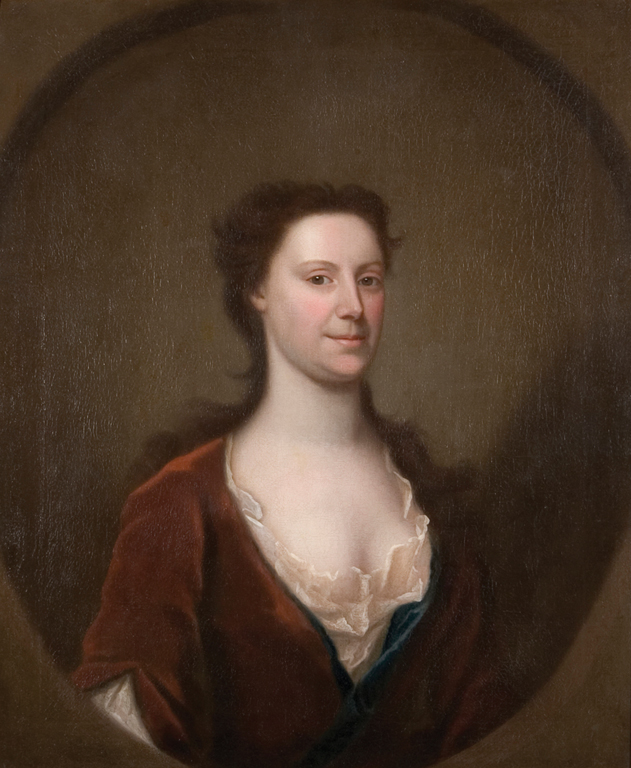JOSEPH BLACKBURN
1700-1778Joseph Blackburn was most likely born in England. It is assumed that he received training in the studio of one of London’s leading portrait painters, perhaps Thomas Hudson or Joseph Highmore, and possibly specialized in drapery. His style emphasized artifice over realism, introducing fanciful costumes, lavish interior and garden settings, and exaggerated jewelry, and deriving the drama of his poses from English imitations of Italian baroque and newer French rococo precedents. He worked in Bermuda from 1752 to 1753, receiving commissions from the leading families of the island. He relocated to the colonies in 1754 and became successful in Newport, Rhode Island, at that time one of the major shipping centers of the Atlantic trade. Blackburn received letters of introduction from one elite client to another, based not only on his skill as a portraitist, but also on his “genteel,” refined and modest behavior. Blackburn also enjoyed success in Boston, Massachusetts and Portsmouth, New Hampshire between 1754 and 1762 due to the patronage of wealthy colonists who appreciated his flattering likenesses, elegant poses, and his skill at depicting silks, laces and satins. He was Boston’s leading portrait painter for about four years, but by 1758 he was joined in popularity by John Singleton Copley, on whose work Blackburn initially exerted a major influence. By 1760 Blackburn had moved to Portsmouth, and painted the social, mercantile, and political elite there and in Exeter, New Hampshire, as well as Newburyport, Massachusetts. Blackburn returned to London late in 1764, and painted in England, Dublin and Wales between 1768 and 1777. His last known dated portrait, Hugh Jones, was produced in England in 1777. He leaves approximately one hundred and fifty surviving portraits.

